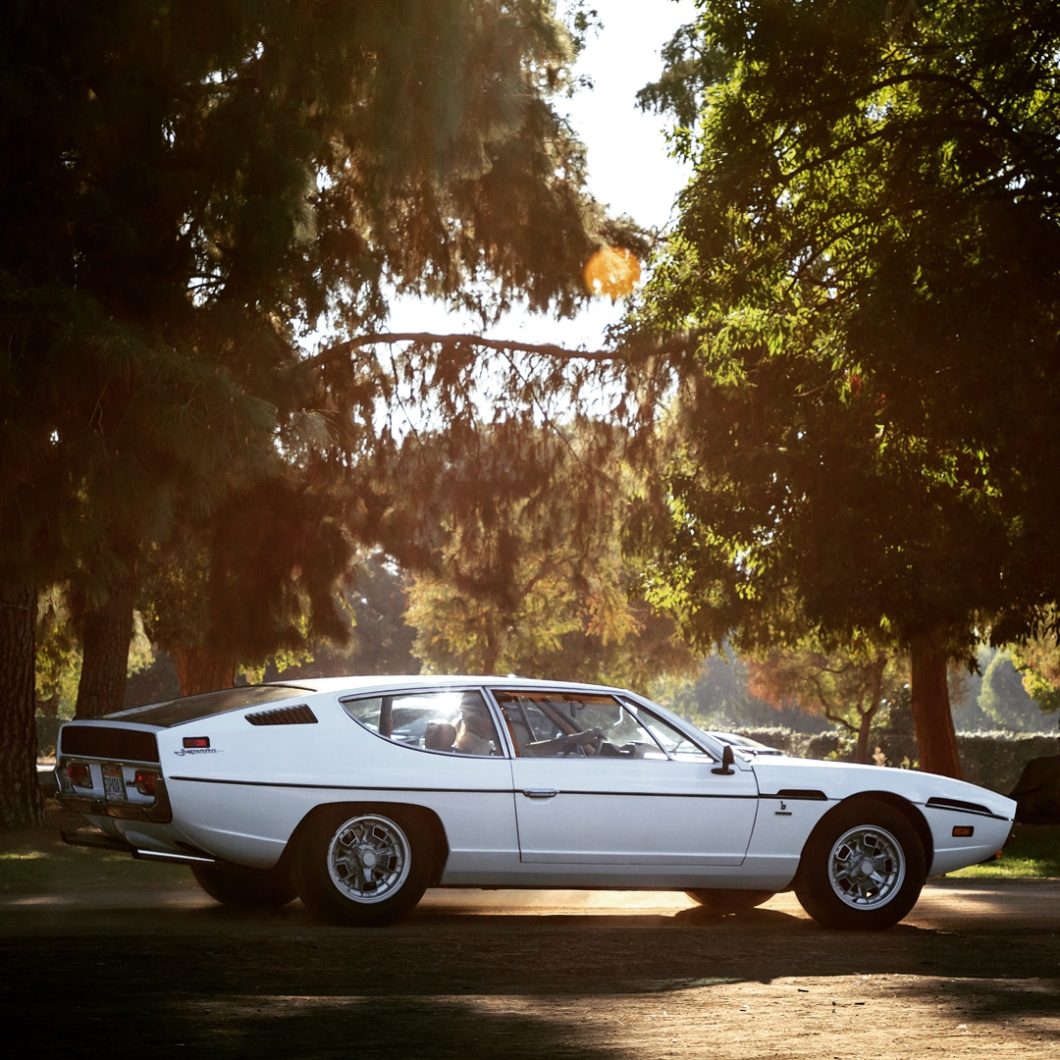There are few things finer than a Lamborghini that you can take friends along in, and I don’t mean the (ahem) Urus. It’ll cost you plenty now, but for many years the Lamborghini Espada was most accessible classic Lambo, and it was the most popular and longest-lived of the cars created by the original Lamborghini team: Gianpaolo Dallara, Paulo Stanzani, Bob Wallace, and Ferruccio Lamborghini himself.
In production from March of 1968 until the summer of 1978, 1,217 were made. That seems small by today’s standards, but they were big numbers for a true exotic back then, and helped Lamborghini weather serious economic headwinds until it was finally felled by the company’s 1978 bankruptcy.
It’s genesis, however, was an exciting time for Sant’Agata and it took shape in an amazingly fast time frame. For three straight years the company wowed the crowds at the Geneva show with wild prototypes and production cars, and the horizon seemed limitless for the unlikely upstart brand, whose name was primarily associated with farm tractors.
Lamborghini’s Beginnings
Looking at pictures of Ferruccio Lamborghini in the 1960s, it’s easy to think of him as a dapper supercar impresario, but he was not a playboy who inherited money or a financier who just paid the bills. Born in Cento, in the of Ferrara on the Adriatic coast of Italy, he was the son of winemakers and a farm boy, but always had a keen interest in machines. During WW2 he was drafted into the Regia Aeronautica Italiana, the Italian Air Force, and served as a mechanic.
After the war his considerable mechanical experience led him to try his hand at designing farm tractors, which were likely to be in great demand in the postwar era and which were then in short supply. It was his designs, made of army surplus parts, that started his business, at first making one or two tractors a week, and ultimately making tractors designed from the ground up.
Lamborghini Trattori, headquartered in his home town of Cento, came from nothing and became a major industrial player by the late 1950s, making Ing. Lamborghini a millionaire in the process. He gradually progressed from Alfa-Romeos and Lancias as his personal cars to a Mercedes 300SL, a Jaguar E-type, a Maserati 3500 GT, and finally a series of Ferraris.
Had his Ferraris not constantly experienced clutch problems, and had Ferrari’s service been more customer friendly, they were after all very expensive cars, he might never have mentioned the problems to Enzo Ferrari himself, and the two might never have argued over it, and Lamborghini might never have modified his own car, and then decided to build cars himself. But that’s how things worked out.
During this time, Ferrari’s “great walkout” happened, when several Ferrari staffers, among them engineers Carlo Chiti and Giotto Bizzarini, finally got fed up with the involvement of Enzo’s wife Laura in company affairs and the leader’s domineering attitude. They confronted Ing. Ferrari. He fired them, and they left to found a new company, ATS (Automobili Turismo e Sport), to make Ferrari-killing supercars.
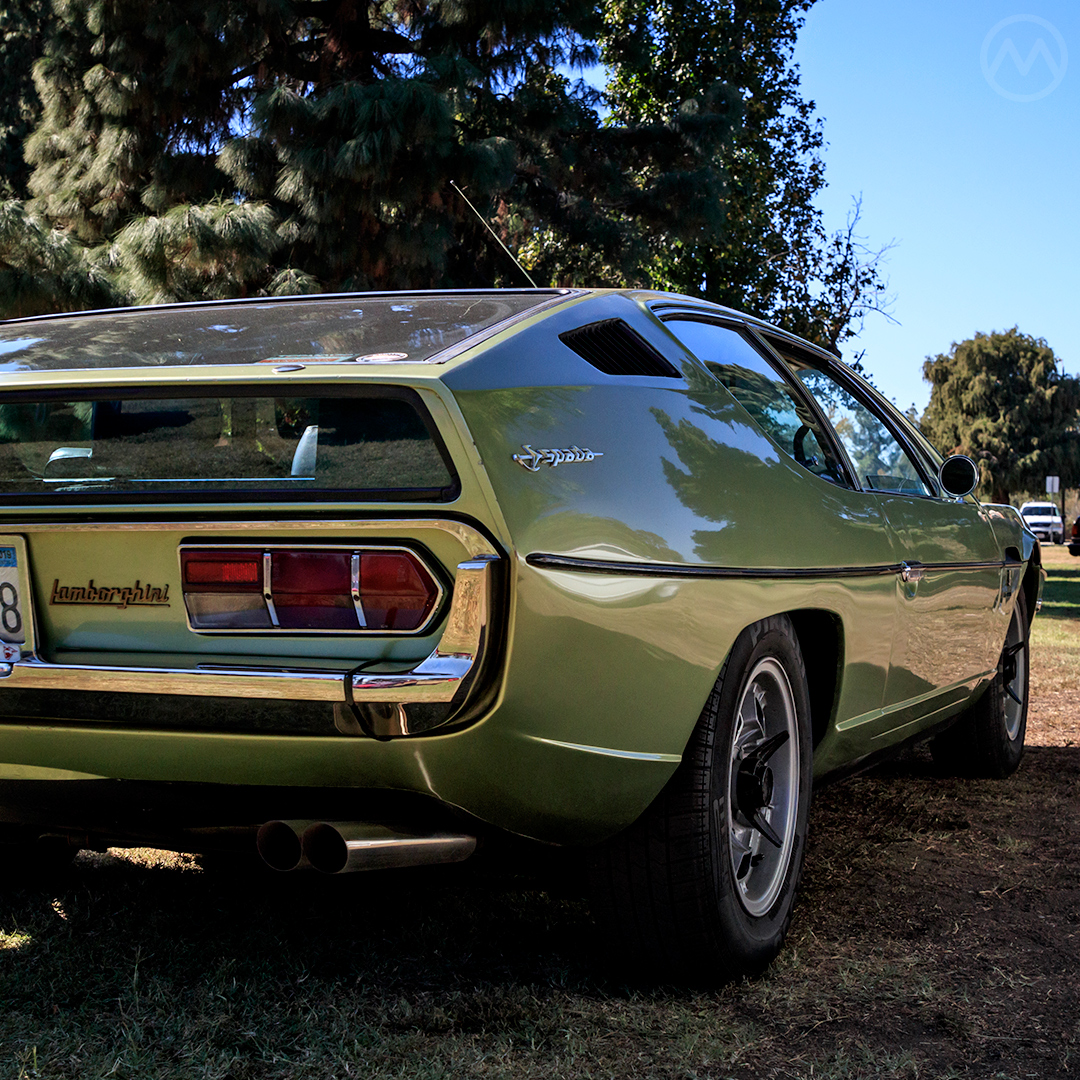
But Bizzarini was commissioned in this moment of transition to design a car and an engine for Ing. Lamborghini. That became the 350GTV concept car and Lamborghini’s long-lived V12. But Bizzarini did not stay on very long, and the car had to be re-engineered by Lamborghini’s core team of Dallara, Stanzani, and Wallace.
While ATS produced the fabulous 2500GT mid-engine V8 supercar and several high-profile racers, that company faded pretty quickly. The same could have happened to Lamborghini, given that it was a real experiment in the unknown, and its early years weren’t easy. It’s possible that going the hybrid route, as De Tomaso and Iso did, might have been easier, but that’s not how Lamborghini did things.
The Factory at Sant’Agata Bolognese was set up there in part because of financial incentives from that city’s communist government. That made funding production easier, but it did nothing to help take advantage of any of Lamborghini Trattori’s expertise. The products were too different and the factories too distant.
The original prototype was well received and the V12 an excellent design, but the car itself needed heavy and costly reworking by the engineering staff and a hefty restyle by Carrozzeria Touring. Dallara led the engineering team as technical director, Stanzani handled structural design and acted as a liaison with the coachbuilders, and Wallace was the test driver and development man.
The initial cars were sold for a loss to stay price competitive with more established makes. It could easily have turned out that Lamborghini fizzled, like ATS, but Lamborghini plowed on and was able to sell enough cars to invest in more, and in the spring of 1965, less than two years after the company had been incorporated, Dallara, Stanzani, and Wallace had cooked up a mid-engine platform called the TP400 (Trasversale Posteriore 4 Litri) as the basis for future Lambos, or, as they saw it, for racing Lamborghinis.
TP400, Miura, and Marzal
Ferraris were famous for their racing success, and but before setting up his own firm, Enzo Ferrari had become famous through Alfa Romeo’s track exploits. But Lamborhgini preferred his Jaguar and Maserati because they were proper gilded Gran Turismos, not just spartan race cars adapted for the road.
He was not interested in racing, and saw Ferrari’s habit of prioritizing racing over commerce-yielding road cars as a tendency he wanted no part of. Ing. Lamborghini humored the engineers by allowing them to develop the TP400 into a road car, but only that, and he also hoped it could be adapted for a luxury model.
Then came the 1966 Geneva Motor show, where the TP400-based Miura and 400GT debuted. The Miura, styled by Bertone’s Marcello Gandini, had a siesmic impact on the automotive landscape and instantly made Lamborghini world famous. It also trumped Ferrari once again. Modena was late to the party on mid-engine cars and had absolutely nothing to counter the Miura, nor would it for some years to come.
The less-noticed 400GT was just as important however, and arguably truer to Lamborghini’s mission. It would become the company’s first real money-maker even if the Miura hogged the limelight.
Now the engineers faced the task of creating Ing. Lamborghini’s luxury car, which it was decided should be in the mold of a four-place GT.
Lamborghini only had one engine, and while the four-cam V12 was a powerhouse, it wasn’t small. The transverse mid-engine setup of the Miura was almost impossible to adapt for a practical four-seat car without producing an enormously long wheelbase and ungainly looks.
The prototype ended up being a rear-engine car with a 2-liter “sidewinder” straight six, effectively one half of the V12. It was clothed in a truly radical shape, again by Gandini. Carrozzeria Touring folded in 1966, and after that, Bertone was essentially the house stylist to Lamborghini, though Carrozzeria Marazzi (formed by ex-Touring staff) still acted as a contract body constructor. After the Miura, Gandini was Bertone’s brightest star.
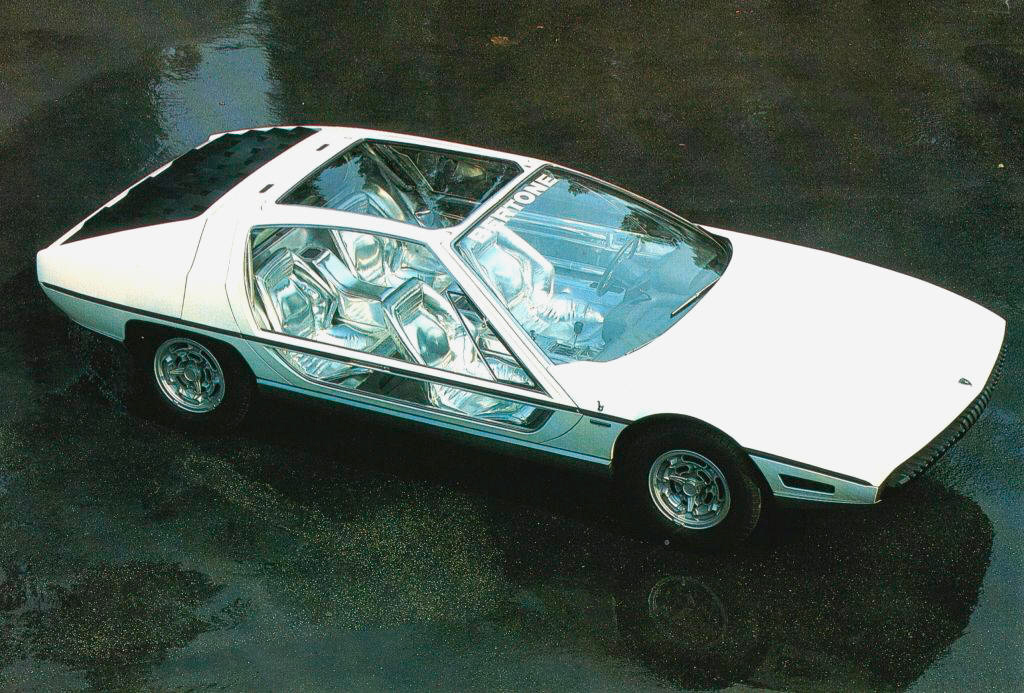
The prototype, called the Lamborghini Marzal, dazzled at the 1967 Geneva show, drawing the same kinds of oohs and ahhs that the Miura had a year earlier. But the straight six couldn’t provide the kind of performance Ing. Lamborghini felt the car should have, and it made the whole idea prohibitively expensive. Furthermore, Lamborghini personally hated Gandini’s glassy gullwing doors.
Having owned a Gullwing 300SL, he disliked that style of door in general and also thought the glass panels weren’t appropriate for ladies wearing that famous 1960s fashion accessory, the mini-skirt. Although parochial in his feelings about this, the glassy gullwings were given an immediate and firm veto.
With both chassis and body not really ready for prime time, Dallara and Stanzani went back to the drawing board while also working on refining the 400GT into the Islero, a car which would cater to Lamborghini’s existing customers and provide an updated version of the original concept, for a 1968 debut.
Developing the Lamborghini Espada
During the spring and summer of 1967, the U.K.’s Daily Telegraph approached Bertone about making a concept car for the London Motor Show later that year.
Quite how or why the Telegraph thought this would stimulate newspaper sales or interest isn’t clear, especially as the Daily Mail provided a comprehensive program for that show and all the papers cover it, but they wanted a show car and were willing to pay for one, and Nuccio Bertone was not going to turn them down.
For a suitable donor chassis, the Telegraph contacted Jaguar and Wiliam Lyons himself sold Bertone a 4.2-liter E-type. The car was stripped down and a new body designed by Gandini, using some of the themes from the Marzal but in a much more conventional and restrained way. It was a more conventional car, and it debuted in London as the Bertone Pirana (yes, that’s how they spelled it).
The Pirana was a huge hit for the Telegraph and Bertone, and exhibited all over the world to good response, but Jaguar wasn’t interested in it and had only been tangentially involved in the project. Bertone found it couldn’t sell the idea to any other manufacturer either.
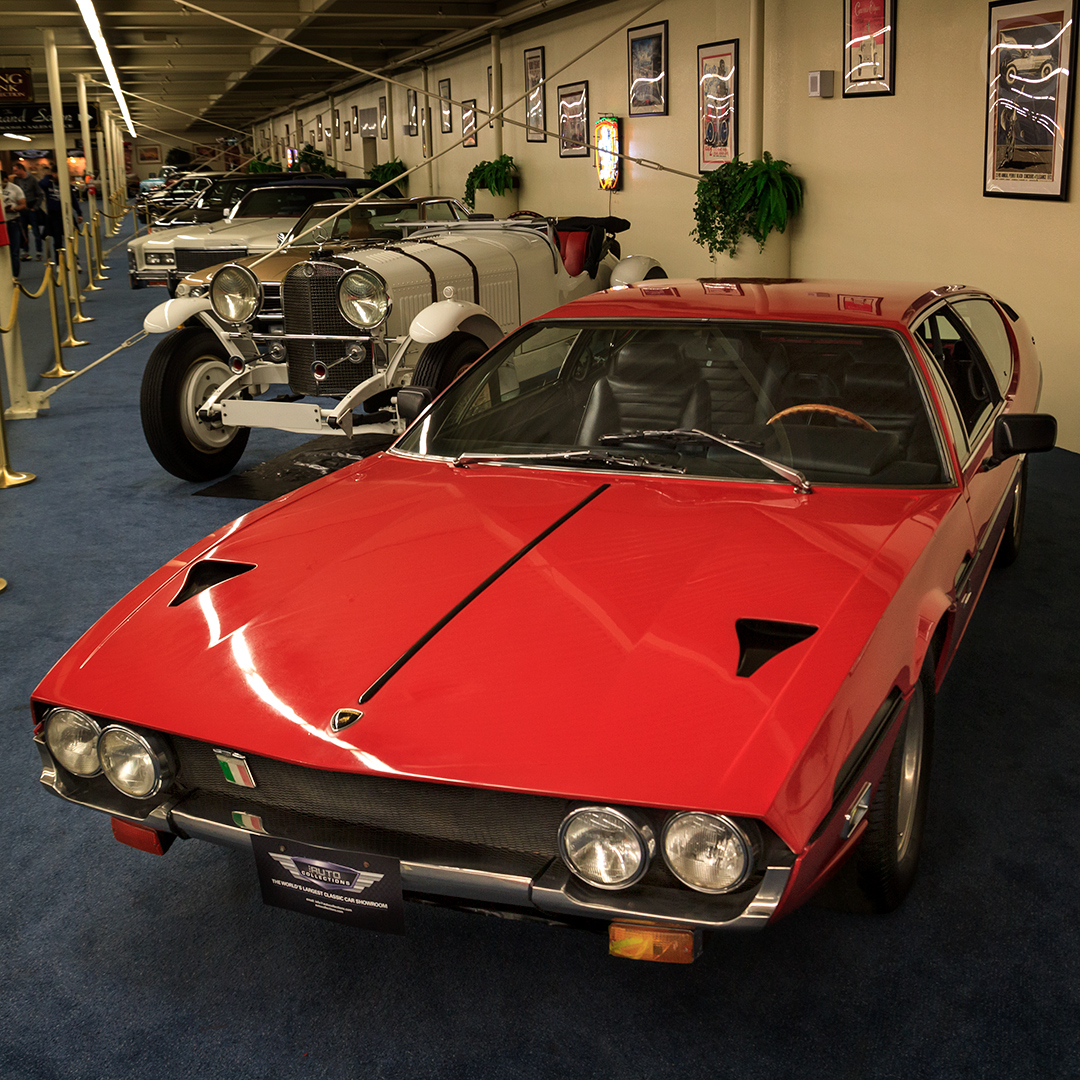
Ferruccio Lamborghini, however, thought the Pirana was much closer to his idea for the four-seater than the Marzal. It was adapted directly, and a blend of Marzal and Pirana was used on the Espada prototype, which Gandini willfully equipped with gullwing doors knowing Lamborghini would reject them. Gandini’s repeated salvos at creating extreme doors for a production Lambo would eventually be rewarded with the “paper cutter” doors of the 1971 Countach.
In the meantime, Dallara and Stanzani had created a new chassis incorporating elements of both the mid-engine Miura and the conventional Islero. That latter car still used much of the aging chassis of the 350/400 GT, and it was too small to make it a four-seater. Elements of both designs formed the new basis of the Espada. Like the Islero, however, the Espada would be fitted with the classic V12, mound north south and driving the rear wheels, instead of any six-cylinder derivatives or transverse setups.
In just under a year the project came to fruition and the Espaca debuted at the 1968 Geneva show, wowing crowds with a personal presentation by Ferruccio Lamborghini for the third year in a row. The name did not come from a bull like the Miura, but rather a bullfighting sword. The car was already in early production during Geneva, so early customers were driving their cars away in the spring of 1968.
The Life of the Lamborghini Espada
The early Series 1 Espada had many details which were later changed or dropped, perhaps reflecting its rapid evolution through two concept cars and a hurried prototype. The initial driving position was too high, limiting headroom in the low-slung car, the dashboard was too ornate and cluttered, though Gandini’s hexagonal themes, from the prototypes, did look cool. The stylized grille ahead of the rear glass was soon dropped as it interfered with visibility and proved fragile.
Still, the Espada sold well from the very start and 186 series 1 cars were made, this despite frequent interruptions from strikes in 1968 and 1969. Not a remote manager or a guy who was afraid to get his hands dirty, some of Lamborghini Automobili’s labor disputes were resolved by the founder himself talking directly with workers and even sitting in on the production line.
The Series 2 Espada (above, in red) was introduced in late 1969. A more sorted car, and 575 were made into 1972. Power was increased from the initial 325 horsepower to 350, and the interior was simplified and made considerably more user friendly. There were new magnesium-alloy Campagnolo wheels using a design adopted from the Miura and a variety of exterior detail changes. Though you had to be somebody very special to get one, the Series II also had a limited run of “VIP” interiors in truly wild 1970s color combinations.
The Series 3, seen here in white and green, was introduced in late 1972 with another round of improvements and regulatory changes so that it could remain on sale in the USA. In time (after this one was made), it even got impact bumpers eventually, though they didn’t really detract from how enjoyable it was to drive and listen to. Another 456 units were made into 1978, but by then circumstances were quite different.
The team started to break up in the late summer of 1968 when Dallara departed and Stanzani took over as tech director. Dallara wanted to build race cars and there was no way Lamborghini was ever going to do that. In fact, Lamborghini did not field factory race teams until the 1990s. Stanzani and Wallace continued to develop ever more exciting sports cars, however, first with the front-engine Jarama (a follow-up to the Islero) and then the mid-engine Urracco and Countach.
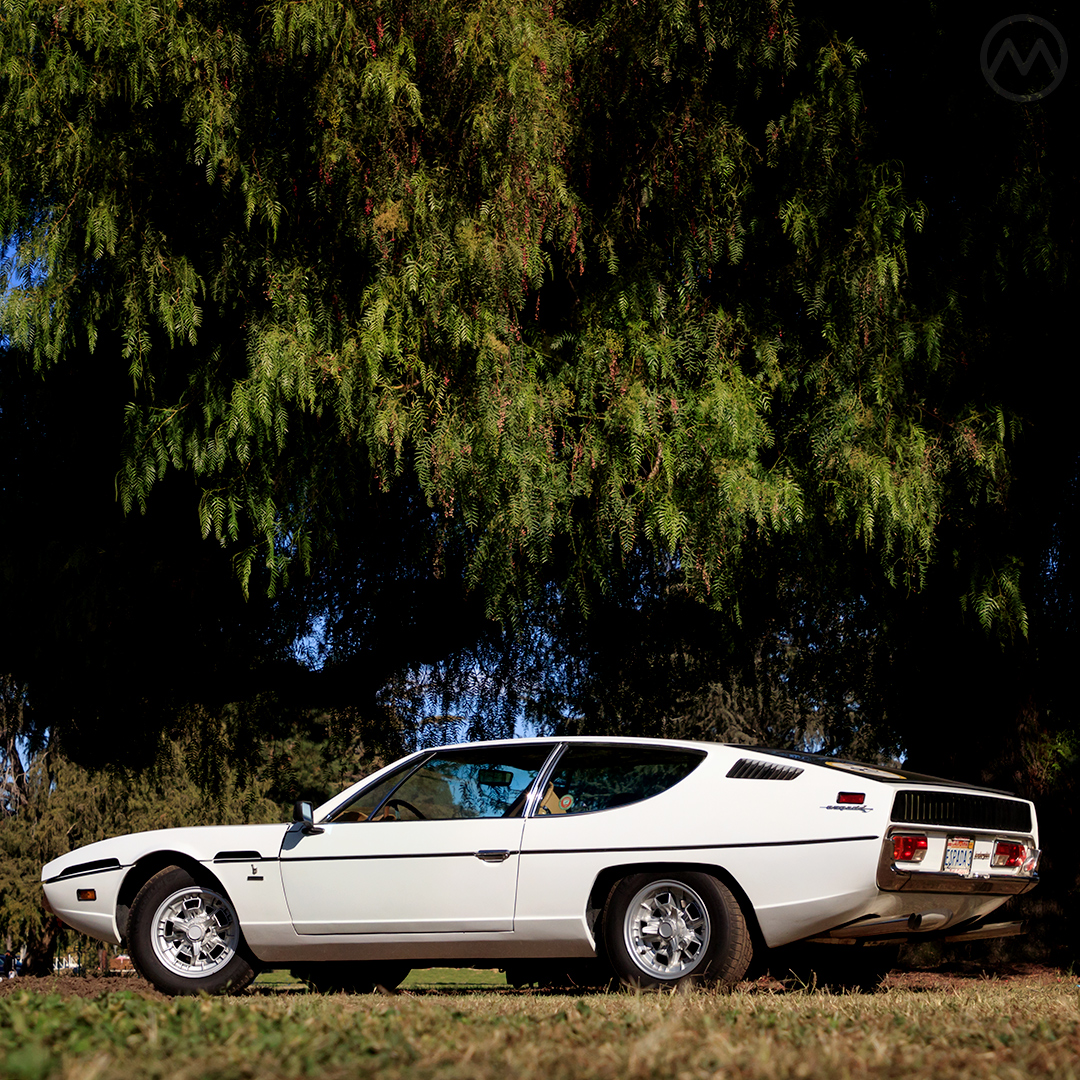
The Lamborghini combine fell into financial trouble by 1972 thanks to a general and long-term economic downturn in Italy but also a series of global events. In South Africa, the local tractor importer cancelled all of its orders, while a Bolivian coup saw orders cancelled there too, leaving Lamborghini Trattori with hundreds of unsold units at the worst possible time. All of Lamborghini’s employees at both companies were unionized and reductions were impossible without bringing in the kind of strife that Lamborghini best wished to avoid and had previously worked to resolve.
Italy’s “years of lead” and the labor unrest the created also led to high-profile kidnappings and attacks on industrialists, which caused them to buy fewer high-profile cars like Lamborghinis.
The result was the founder sold off both companies right in the middle of the Countach’s protracted development, and finally parting with his remaining stake in the company in the wake of OPEC 1. The Espada and later Urraco generated most of the black ink for the company during the Countach’s early years, allowing it to weather that crisis, but economic circumstances drove the company into bankruptcy in 1978, spelling the end of Espada production.
The company did not emerge from receivership until 1980, when Swiss brothers Jean Claude and Patrick Mimran invested in it and modernized the facilities. The Espada remained Lamborghini’s all-time sales champ until the mid-1980s, when it was overtaken by the Countach. In the 1980s and 1990s the profile of the Espada was fairly low, with most interest by enthusiasts being directed at the Countach and the slightly lower profile Jalpa. In the 1990s, Espadas were cheap to buy relative to any other classic Lambo, but not so anymore.

